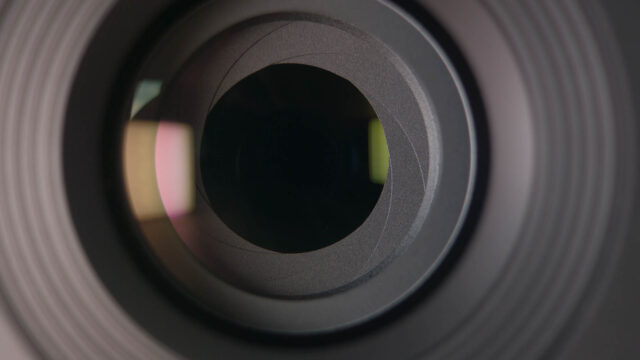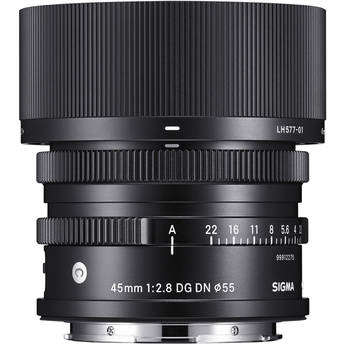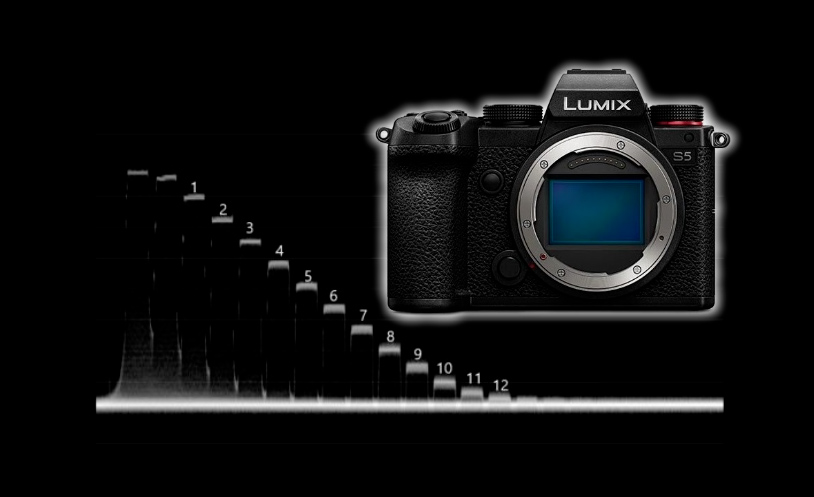
We are running the LUMIX S5, the newest addition to the LUMIX S line, through our lab test. Curious to see how it fares? Read on!
Since my colleague Johnnie has brought the Panasonic LUMIX S5 from Japan I was eager to run it through our lab test.
By the way, please have a look at the nice portrait of Ai Kishimoto that Johnnie shot with the Panasonic S5 in Japan here.
If you are not familiar how we test, please head over here.
Rolling Shutter of the Panasonic LUMIX S5
As usual, we are using our strobe light to generate pairs of white and black bars (they appear due to the nature of CMOS sensor readout).
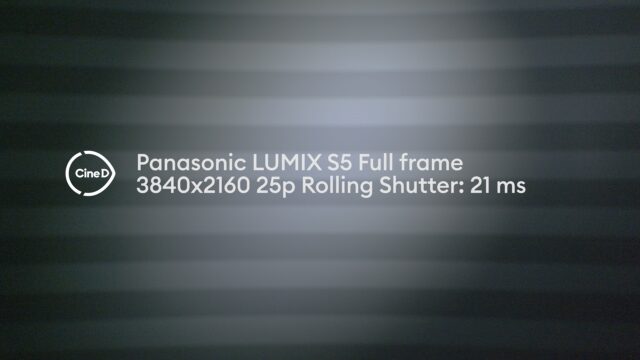
Counting the bars in full frame 25p mode 21ms of rolling shutter are measured. This result is OK but nothing special for a full frame sensor. The Canon R5, for example, has a really good 15.5ms value (in DCI 17:9 full frame mode).
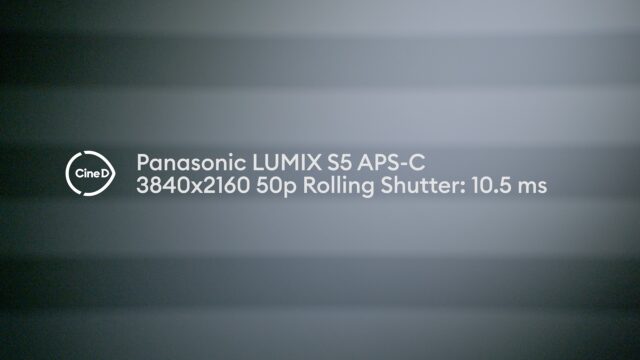
In APS-C mode the rolling shutter exactly halves, 10.5ms are measured for 25p and 50p. This is a very good valve for APS-C.
Dynamic Range of the Panasonic LUMIX S5 at ISO 640 in V-Log
The LUMIX S5 features a dual native ISO sensor, with ISO 640 and ISO 4000 being the two native values.
At ISO 640 in V-Log (sharpness and noise reduction set to minimum – “0”) a good 12.1 stops at signal to noise ratio (SNR) of 2 is measured. That is a very solid result.
In the waveform also a 13th and 14th stop is visible, albeit buried in the noise floor.
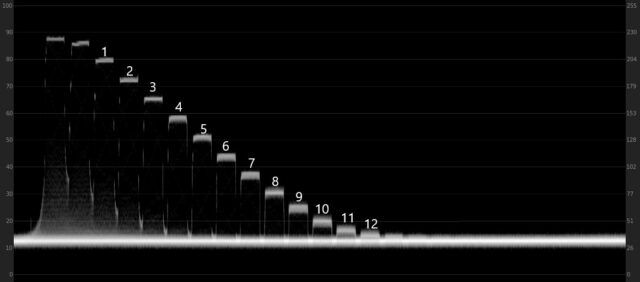
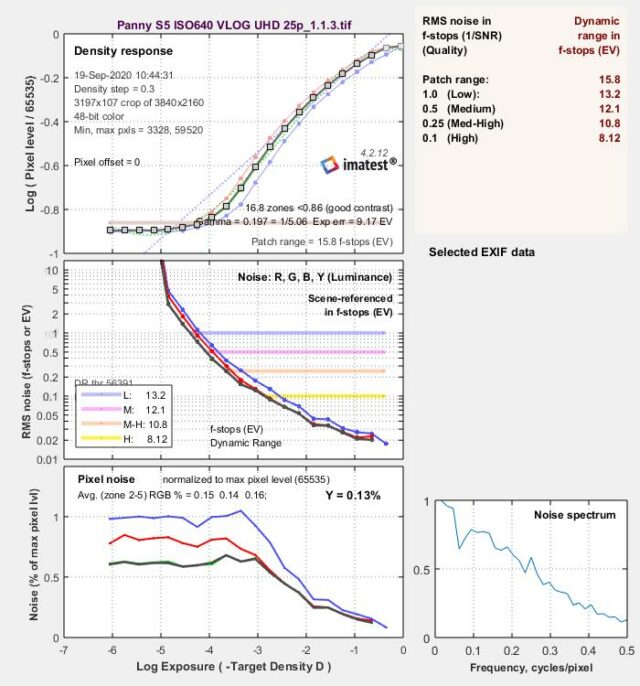
Dynamic Range of the Panasonic LUMIX S5 at ISO 4000 in V-Log
At the second native ISO setting of 4000, a very similar result for the dynamic range is obtained, 11.9 stops at SNR = 2. Also here the waveform shows a 13th and 14th stop within the noise floor.
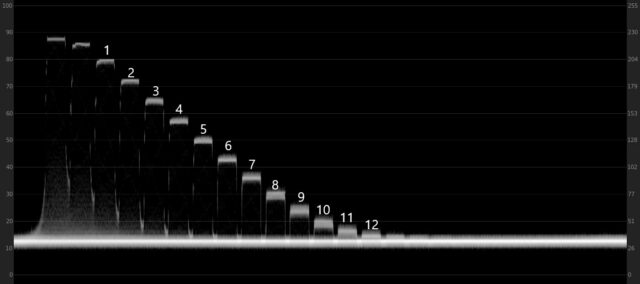
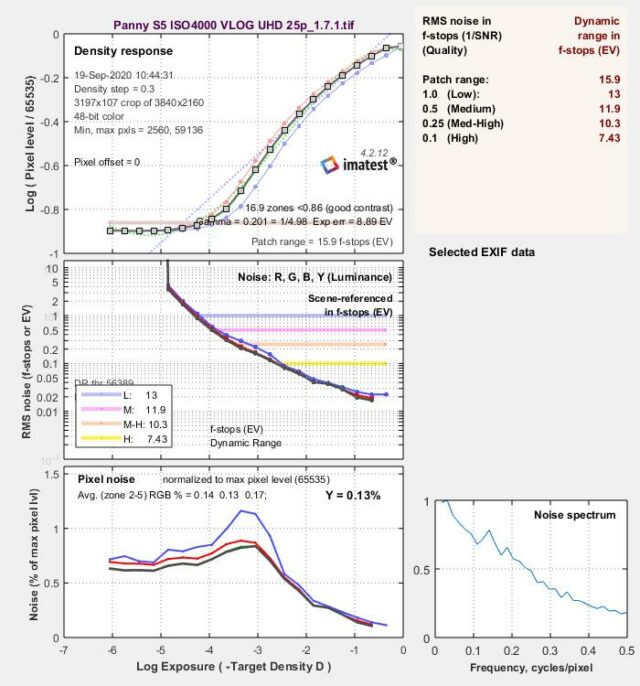
Underexposure Test of the Panasonic LUMIX S5
As usual, for our underexposure test, we arrange the scene in such a way that my colleague Johnnie’s face is exposed at a maximum luma value (using a waveform monitor) of 60%. This gives a base exposure of F4 at a 360° shutter angle at ISO 640 using V-Log (sharpness and noise reduction set to “0”).
Then we successively reduce the shutter value to 180, 90, 45, 22.5 and 11.25° giving 5 stops of underexposure.
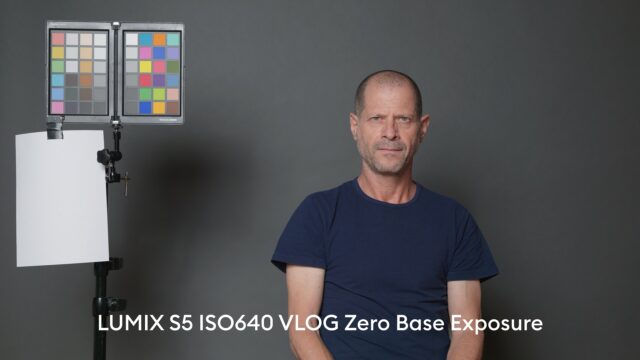
In DaVinci Resolve (16.2.5) using the waveform result of the zero base exposure scene, we push up the underexposed images by the respective number of stops using the lift, gamma, and gain controls.
So, let’s jump ahead to the 3 stops underexposed scene, pushed back to zero:
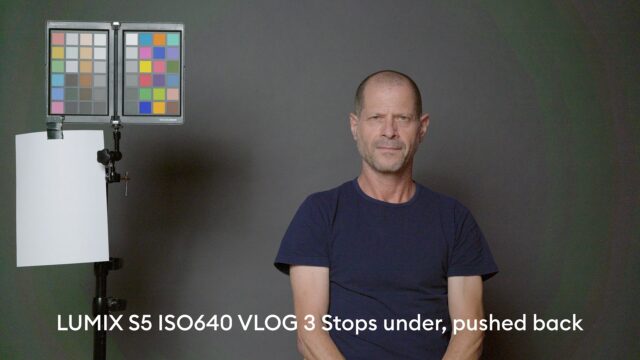
Strangely, the shape of the iris of the used SIGMA 45mm 1:2.8 DG DN is visible in the outer areas of the shot (more greenish).
In-camera, the vignetting compensation was turned to “off”. I have no solid explanation for this phenomenon – which is effectively ruining the shot.
Apart from that, the 3 stops under image is quite usable, noise is finely dispersed and can be removed very effectively with noise reduction (if you feel you need it).


At four stops under and pushed back, if it were not for the visible iris the image is still quite usable – remarkable, see above. The noise is finely dispersed and can be easily removed by noise reduction, using 3 frames temporal (threshold = 10) in DaVinci Resolve.
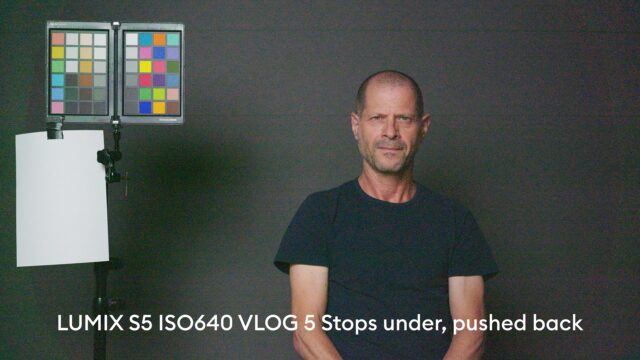

At 5 stops under, pushed back horizontal stripes start to appear in the image, and the point of no return is reached. However, noise reduction again quite effectively removes the noise and you could get away with this image.
Summary
All in all, Panasonic has provided a very, very capable package with the LUMIX S5 – rolling shutter values are OK (full frame) to very good (APS-C), dynamic range results for both native ISO’s are a solid ~12 stops.
And finally, our torture test, underexposing the image using the internal H264 10bit 4:2:2 long GOP codec, produces very good results even at 4 stops underexposure, pushed back to zero. The encoder holds up well, and the noise is finely dispersed such that noise reduction works very effectively.
The only strange phenomenon is the appearance of the iris shape in the images – having the potential to ruin your shot already at 3 stops underexposure. If any of our dear readers have a good explanation for this I would be very interested to hear it.
What do you think about the Panasonic LUMIX S5? Will you consider it to be your next camera? Please share with us your thoughts at the comment section below!
